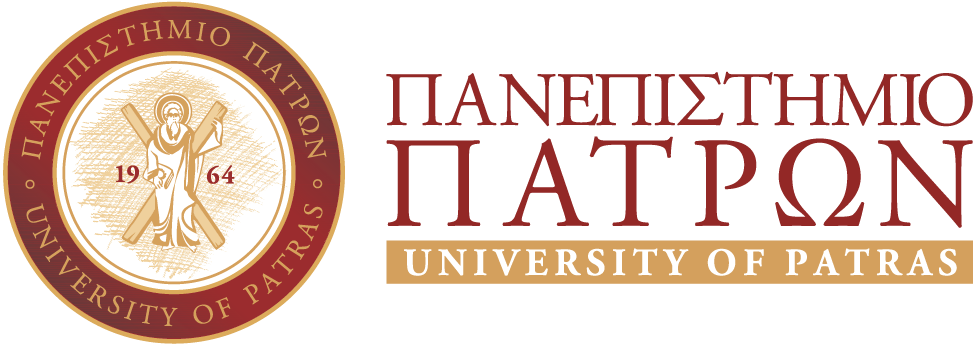Μάθημα : ΕΡΓΑΣΤΗΡΙΟ ΣΧΕΔΙΑΣΜΟΥ ΚΑΤΕΥΘΥΝΣΗΣ: Χωρο-Κατασκευές Τεχνολογικής Αιχμής για Αστικά Δρώμενα
Κωδικός : ARCH462
ARC _0901 - Αικατερίνη Λιάπη
Περιγραφή Μαθήματος
ENGLISH
In this course we will deal with the design of innovative structures that are able to change their form to meet new needs, or that can be transformed from a compact to a fully expanded configuration. Such structures can have a positive impact on the economy of environmental resources, as they offer an alternative to massive building structures, minimize the required workforce and the total construction and erection energy, and are often reusable and adaptable. The ephemeral nature of these structures affects both their design concept and the technology to be used.
Students on this studio are asked to design a small-scale pavilion, which will promote and showcase innovation in the use of design concept, materials, construction technology, and adaptation to environmental parameters; eventually these parameters will determine the new structure’s morphological expression. Understanding and studying the pavilion structures’ transformations and the mechanisms that allow them to change geometric and functional form, is a major part of the design process. Furthermore the development of innovative concepts of structures in this field may require the development of new parametric tools, digital fabrication methods, etc.
Prerequisite: Students should have taken, or currently attend the SPECIAL TOPICS IN ARCHITECTURAL TECHNOLOGY course
ΕΛΛΗΝΙΚΆ
Στο μάθημα θα ασχοληθούμε με τον σχεδιασμό καινοτόμων κατασκευών οι οποίες είναι προσωρινές, και επαναχρησιμοποιούμενες. Ο εφήμερος χαρακτήρας των κατασκευών αυτών έχει επιπτώσεις τόσο στη θεωρητική προσέγγιση στο σχεδιασμό τους όσο και στην τεχνολογία που πρέπει να χρησιμοποιηθεί για να ικανοποιηθούν οι προβλεπόμενες λειτουργικές ανάγκες.
Κατά τη διάρκεια του εξαμήνου, οι φοιτητές καλούνται να σχεδιάσουν, μικρής κλίμακας «περίπτερο», pavilion, που θα λειτουργεί και σαν έργο επίδειξης ευρηματικότητας ως προς τη χρήση των υλικών, τη τεχνολογία σχεδιασμού και κατασκευής, τη προσαρμογή του σε περιβαλλοντικές παραμέτρους, την μορφολογική και τεκτονική του έκφραση.
Η κατανόηση και μελέτη των μετασχηματισμών στο χώρο, και των μηχανισμών που τους επιτρέπει να αλλάζουν γεωμετρική και λειτουργική μορφή, είναι προϋπόθεση για τη σχεδιαστική διαδικασία.
Η μεθοδολογία του σχεδιασμού των κατασκευών αυτών περιλαμβάνει και μελέτη συνδεσμολογίας καθώς και τη παραμετρική περιγραφή και κινηματική ανάλυση τους.
ΣΤΟΧΟΙ
- Να κατανοήσουν οι σπουδαστές τις ανάγκες που εξυπηρετούν, πλεονεκτήματα, αλλά και πιθανά προβλήματα αυτών των κατασκευών μέσα από αναδρομή σε ιστορικά και σύγχρονα παραδείγματα.
- Να ενημερωθούν οι φοιτητές για state-of-the-art έρευνα σε ερευνητικά και ακαδημαϊκά κέντρα του εξωτερικού στην γενικότερη περιοχή των κατασκευών αυτών.
- Να μελετηθούν κριτήρια και παράμετροι που πρέπει να λαμβάνονται υπ’ όψη στον σχεδιασμό καινοτόμων κατασκευών, και να ενταχθούν στη μεθοδολογία σχεδιασμού τους.
ΜΑΘΗΣΙΑΚΑ ΑΠΟΤΕΛΕΣΜΑΤΑ
- Κατανόηση της έννοιας της «δομικής μορφολογίας» σε σχέση με τη δομική συμπεριφορά τους, την υλικότητα τους, τη τεκτονική και μορφολογική τους έκφραση, και την προσαρμογή τους σε περιβαλλοντικές συνθήκες.
- Κατανόηση των συνθήκων που παραπέμπουν στο σχεδιασμό ειδικών χωρο-κατασκευών τεχνολογικής αιχμής µε έμφαση στις προσωρινές, και επαναχρησιµοποιούµενες.4
- Εξοικείωση με μεθόδους παραμετρικού σχεδιασμού και κινηματικής προσομοίωσης κατασκευών.
- Εμπειρία στο σχεδιασμό καινοτόμων κατασκευών μεταβαλλόμενης γεωμετρίας ο οποίος στηρίζεται στις μεθόδους που έχουν συζητηθεί στα πλαίσια του μαθήματος Ειδικά Κεφάλαια Αρχιτεκτονικής Τεχνολογίας.
|
|
Γενικές Ικανότητες |
|
Eυρηματική και καινοτόμος προσέγγιση ζητημάτων αρχιτεκτονικού σχεδιασμού και κατασκευαστικής τεχνολογίας. |
|
Ημερολόγιο
Ανακοινώσεις
Όλες...-
προχθές - 2:33 π.μ.
-
Πέμπτη, 4 Δεκεμβρίου 2025 - 8:06 π.μ.
-
Παρασκευή, 14 Νοεμβρίου 2025 - 9:34 μ.μ.
